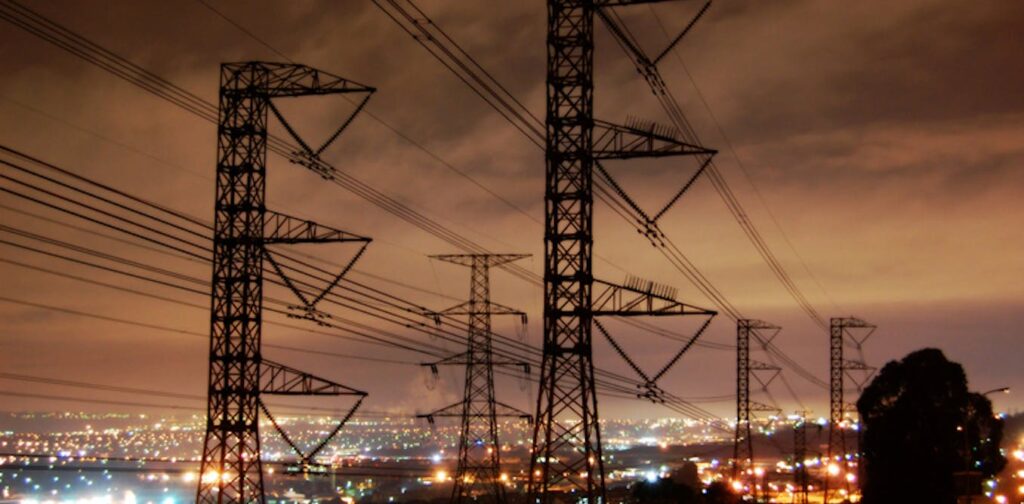South Africa's electricity sector has faced a series of challenges over the past two decades. It began in the 1990s when South Africa's electricity grid infrastructure was inadequate to supply electricity to the majority of its population. In 1994, only 36% of all households were electrified. 50% of urban population, 12% of rural population.
Particularly in the mid-2000s, the state-run power company Eskom faced liquidity and profitability problems. They received frequent bailouts from the government. The 2022 national budget allocated R21.9 billion (approximately US$1.5 billion) to Eskom.
Meanwhile, Eskom's aging power plants are aging and frequently breaking down. From 2007 to 2008, power companies were unable to supply electricity to meet aggregate demand. Planned power outages were implemented. These are planned and temporary power outages that help balance the supply and demand of electricity in the market to avoid nationwide power outages.
Electricity prices increased by an average of 14.73% from the previous year from 2008/09 to 2018/19.
In recent years, especially since 2008-2009, unstable electricity supplies and rising prices have had a disastrous effect on the economy. It is a barrier to income generation, economic growth and development. South African businesses suffered heavy losses. The rolling blackouts are expected to reduce GDP growth by 3 percentage points in 2021 and eliminate 350,000 potential jobs.
Political and academic debates about electricity and economic growth tend to focus on the impact of either generation capacity or demand and consumption. Instead, we wanted to investigate the impact of the mismatch between electricity demand and supply on economic growth. We initially thought that mismatches, such as shortages or surpluses, would probably have a negative impact on economic growth.
Our study covered the South African economy from 1985 to 2019. We found that an increase in electricity surplus promoted economic growth. Increased economic growth also made resources available to increase power generation capacity, contributing to an increase in electricity surpluses.
A mismatch between the supply and demand of electricity will only lead to growth if the supply exceeds the demand. Reduced demand, such as through managed power outages, undermines the electricity market's potential to have a positive long-term impact on South Africa's economy.
These results were not entirely what we expected.
Policies are usually aimed simply at expanding electricity generation. Instead, our analysis suggests that we need to allow electricity demand to increase enough to foster economic growth, while at the same time ensuring that supply always outweighs this increase in demand. I am.
Analysis of variables
We used data on electricity supply and consumption, trade, fixed capital accumulation, gross domestic product, and employment from several sources. These include the World Bank, Statistics South Africa and the Council for Scientific and Industrial Research.
We analyzed the data using techniques that examine longitudinal relationships between variables over selected time periods.
In economics, a market becomes unbalanced when there is a difference between the demand and supply of an item. Until the mid-1990s, the South African electricity market had relatively matched supply and demand, although it was not completely balanced.
The first electricity shortages occurred in the late 1990s. This may be an effect of the 1991 mass electrification program. Access to electricity rose from less than 50% in the early 1990s to more than 80% in the mid-2000s. Meanwhile, the economy was recovering with the lifting of sanctions and the advent of democracy. Households and the productive sector of the economy experienced a sharp increase in electricity demand.
In 1997, Eskom requested additional generation capacity to meet anticipated increases in demand. However, production capacity did not increase as much as expected. As a result, Eskom was unable to meet the electricity consumption requirements from 2002 to 2008.
The power sector remained haphazard during the study period due to a mismatch between supply and demand.
Overall, the electricity surplus boosted South Africa's economic growth. And expanding economic growth contributed to an increase in electricity surpluses. However, if demand exceeded supply, the mismatch did not lead to economic growth. The effects of positive and negative periods of mismatch are not the same.
Economic growth creates scope for increasing power generation capacity. This can be attributed to increased tax revenues, electricity affordability for consumers, improved financial position of national utilities, and improved credit rankings to attract investment in the energy sector. Therefore, space could potentially be created for even greater surpluses. Also, when electricity supply exceeds electricity consumption, economic growth is promoted by reducing the risk of power outages.
As electricity consumption increases, a corresponding increase in sufficient supply to the market is required to maintain the growing surplus. At the same time, demand must increase at a level that leads to economic growth.
policy goals
Economic and energy policy makers are responsible for increasing both the demand and supply of electricity so that there is always a surplus of energy. This promotes economic growth.
The policy objective is therefore more complex than simply increasing power generation capacity. It must also promote energy efficiency, promote economic opportunity, and meet environmental commitments.
Power generation capacity needs to become more adaptable and flexible. A potential way to achieve this is by increasing the role of renewable energy sources and achieving a more diverse supply mix.

